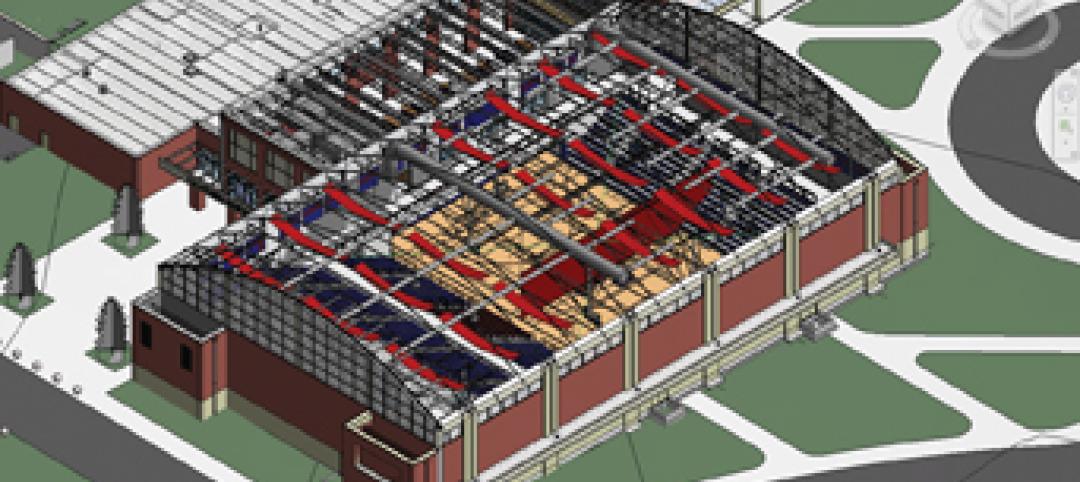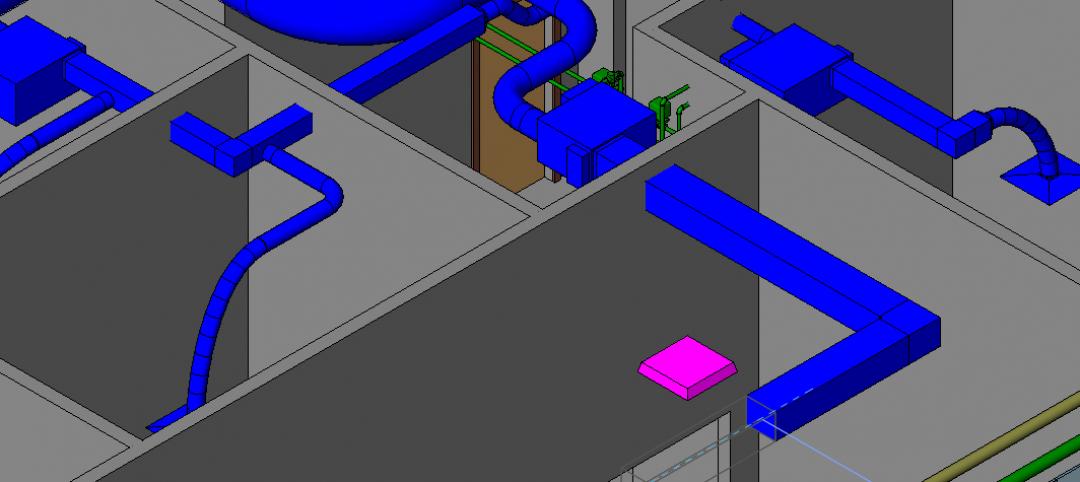During the past half-decade, a number of AEC technologies have sprung from a common, and perhaps unexpected, source: video games. From urban planning tools to the integration of VR, the well of video game inspiration springs eternal in the AEC world.
The newest tool to find a home in the kits of architects and designers has spent the last couple of decades being perfected by the video game industry: real-time rendering.
Real-time rendering, as its name would suggest, is focused on producing, altering, and analyzing images in real time. In the video game world, real-time rendering can be seen during game play; a character is controlled and the surrounding environment alters accordingly to simulate movement. A cutscene in a video game—when a player has no control—represents a more traditional, pre-rendered approach that is common in the AEC industry.
For AEC professionals, choosing real-time rendering techniques over more traditional rendering can mean the difference between making a change that is reflected instantaneously and making a change that may take a week or longer to be reflected in the project renderings. This swift turnaround can help firms save time and money and create a more streamlined experience for clients.
There are several software options: Enscape, eyecad VR, FluidRay RT, and Lumion. These tools work with programs such as SketchUp, Revit, and Rhino to enable real-time rendering and eliminate exporting modeling to another program.
With these tools, architects can make adjustments, large and small, to building plans. A designer using SketchUp with the Lumion Live Sync plug in, for example, can make necessary changes in the SketchUp model and see them reflected immediately in Lumion.
Users can move objects around, add different surface textures (e.g., polished, chrome, fabric), have lights or electronic screens emit illumination, and change sun settings. Realistic water, grass, time of day, and shadow effects can also be added and changed. In many cases, full visualizations can be created from an architectural model in 15 minutes.
Display settings can be changed for presentation purposes. Enscape’s Light View shows how much lux falls onto each surface in real time as the sun changes position throughout the day. If the date, time, and location have been selected, the sun angle will be displayed correctly.
 A before and after depicting Enscape’s real-time rendering software.
A before and after depicting Enscape’s real-time rendering software.
The single greatest benefit real-time rendering provides is better communication between an architect and a client. “It promotes active participation in design presentations and allows us to be more flexible,” says Phil Kolbo, LEED AP, Senior Architect and Associate Principal with Populous.
Traditional rendering methods require the design to be developed beforehand, so any requested changes need to be noted and executed at a later date. This means if a design team wants to present a client with three design options, four material choices, and six views, the presentation would require 72 different renderings. With real-time rendering, the design options can be changed in real time and the material options can be toggled on/off in seconds.
Orlando City Stadium, designed by Populous and opened in early 2017, is the result of this new real-time rendering approach. The 25,500-seat stadium’s seating bowl was designed in real time in front of the client group. The design team was able to test a variety of ideas as quickly as they or the client group could think of them. “As a result, the clients came to understand the site and stadium design limitations as much as we did, and we left the meeting with a greater level of trust from the clients,” says Kolbo.

Populous utilized real-time rendering tools to enhance client collaboration efforts on the 25,500-seat Orlando City Stadium.
Real-time peccadilloes
Just about any computer has the power to display traditionally rendered images without issue. But real-time rendering requires more powerful hardware, especially in the graphics department.
“Designers have to create models efficiently in order to achieve the best visual performance,” Kolbo says. “Strategies like advanced texturing and light baking can give models a life-like level of quality while still allowing them to run at a real-time level.”
Another consideration is allowing extra time for design and development. Because a client can request to see any part of a model at any time due to real-time rendering’s flexibility, all parts of the model need to be of high quality and ready to view.
“The technology behind real-time rendering software is constantly improving, but it currently calls for designers to make a choice between easy-to-use and non-customizable solutions or ones that are more complex and versatile,” says Kolbo. “Merging these points will unlock a lot more potential in the future.”
Real-time rendering still presents some trade offs when compared to traditional rendering. But as the technology advances, the benefits will begin to outweigh the limitations.
Related Stories
| May 16, 2011
Dassault Systèmes to distribute Gehry Technologies’ digital project
Dassault Systèmes and Gehry Technologies announced that Gehry Technologies’ Digital Project products will be integrated into the Dassault Systèmes’ portfolio and distributed through Dassault Systèmes. Digital Project is a suite of 3D BIM applications created by Gehry Technologies using Dassault Systèmes’ CATIA as a core modeling engine.
| May 3, 2011
Scott Simpson of KlingStubbins on how to get more value from BIM
Too few AEC professionals have developed a strategic idea of how BIM can and should re-shape professional practices and drive dramatic improvements in both creativity and production, according to Scott Simpson, FAIA, senior director of KlingStubbins. While BIM enables the exploration of design ideas quickly and in new and different ways, it can lead people to think they’re making more progress than they actually are. A simple adjustment in perspective is all it takes to put things right.
| May 2, 2011
URS acquires Apptis Holdings, a federal IT service provider
SAN FRANCISCO, CA and CHANTILLY, VA– April 28, 2011 – URS Corporation and Apptis Holdings, Inc., a leading provider of information technology and communications services to the federal government, announced that they have signed a definitive agreement under which URS will acquire Apptis.
| Apr 12, 2011
BIM Grows Up: Separating Hype from Reality in a 3D World
While BIM adoption still lags in both design and construction, some enterprising owners, architects, and contractors are unlocking the potential of this dynamic technology.
| Apr 5, 2011
Are architects falling behind on BIM?
A study by the National Building Specification arm of RIBA Enterprises showed that 43% of architects and others in the industry had still not heard of BIM, let alone started using it. It also found that of the 13% of respondents who were using BIM only a third thought they would be using it for most of their projects in a year’s time.










